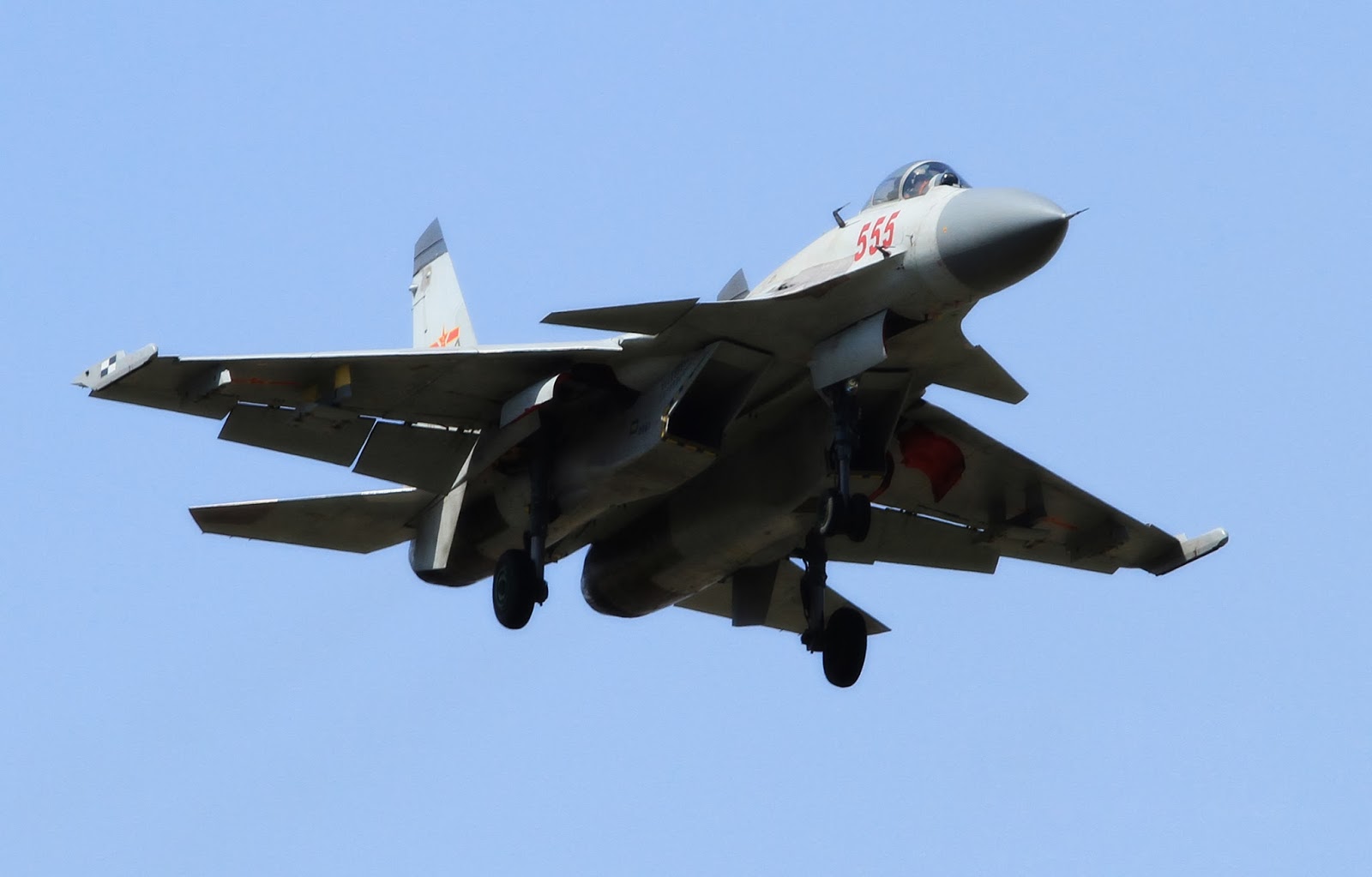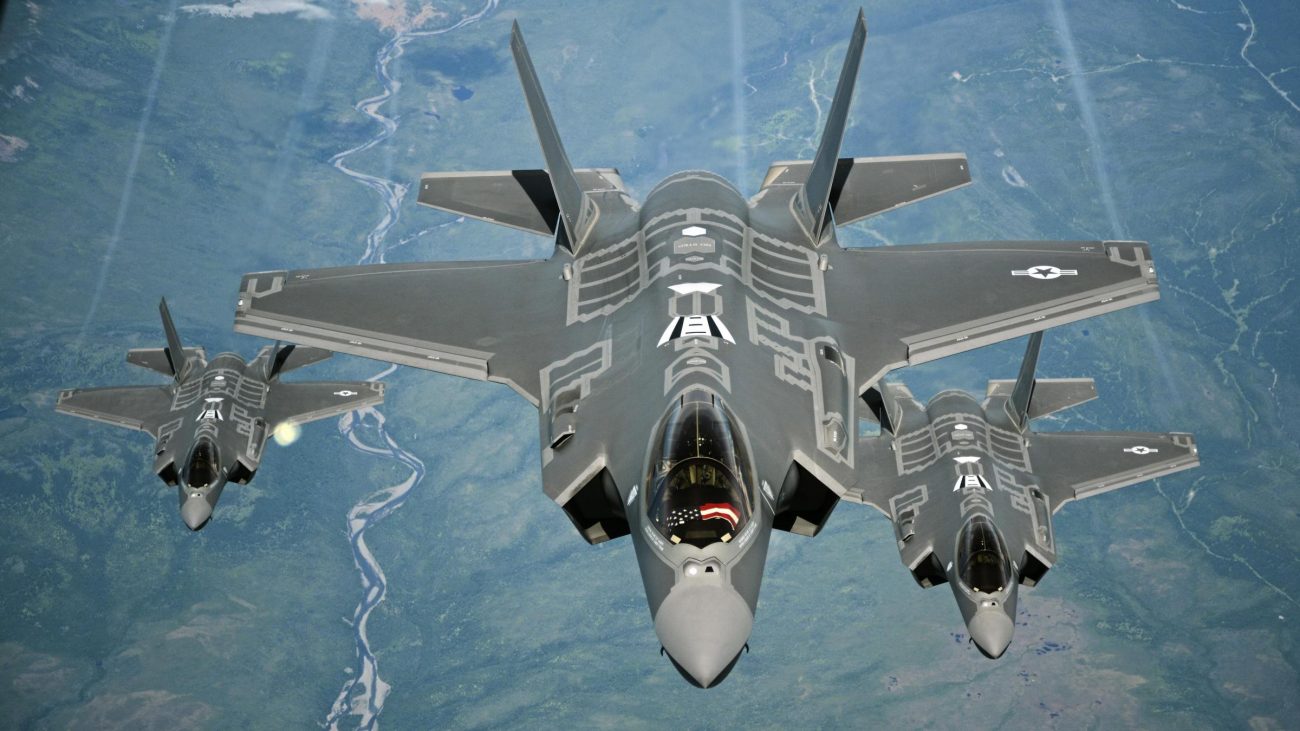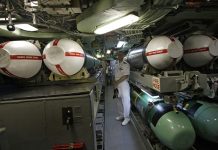China’s Eastern Theater Command used more than 100 military aircraft to participate in the drills off the coast of Taiwan on Thursday, China Central Television (CCTV) reported.
Earlier in the day, China launched a large-scale military exercise in six water zones and airspace off Taiwan in response to the visit of US House Speaker Nancy Pelosi to the island.
CCTV posted a video showing Chinese military aircraft carrying out exercises off Taiwan’s coast. According to the report, over 100 fighters, bombers, and other military aircraft are participating in the drills.
Tensions between China and the island it claims as its territory boiled over this week after Pelosi ignored Beijing’s warnings and went ahead with her plan to visit Taipei while on an Asia tour.
Pelosi is the highest-ranking US official to visit Taiwan in 14 years. The United States does not officially recognize Taiwan’s independence.

Dual Threat Of China, Russia
The United States, anticipating a conflict with rivals Russia and China, is trying to enhance two crucial areas of military operations – command and control and logistics.
In the former, the US Air Force introduced the Combat Axe training program to test and refine command and control capabilities in the event of “degraded communications.”
In the latter, the Pacific Deterrence Initiative (PDI) document submitted to Congress has admitted poor basing, supply, and logistics that cannot support sustained high-intensity combat in the Western Pacific or the Indo-Pacific region.
EurAsian Times, on May 6, reported that the PDI document had also written about Assistant Commandant of the US Marine Corps, General Eric Smith admitting the “wicked” logistics problems that might plague the Corps’s Force Design 2030 concept on June 19.
Previous reports by Eurasian Times had touched upon the massive ‘away disadvantage’ the US military faces in the Western Pacific before China, the latter enjoying ‘home advantage’ of rapidly resupplying its forces.
Pentagon-commissioned wargames by the RAND Corporation, too, had repeatedly ended in devastating defeats in a Taiwan contingency, with China overwhelming Taipei’s and Washington’s military with thousands of boats, jets, drones, and aircraft.
Command & Control
In Combat Axe, a Weapons Systems Evaluation Programme (WSEP) under USAF Chief of Staff General Charles Q Brown Jr’s ‘Accelerate or Lose’ strategic approach, the force presents high-end scenarios and collects and analyzes data.
This is to arm “Senior Leaders, Combatant Commanders, and operators with an enhanced understanding of the performance of the Air Force’s C2 weapon systems against maturing threats.” It also secondarily serves as an advanced training experience for combat-ready operators.

Aimed at combined and joint operations with friendly forces, Combat Axe was employed in the recent Combat Archer 22.08 and the Checkered Flag 22-2 air-to-air exercises at the Tyndall Air Force Base in Florida. Squadrons from the US Air Force, US Navy, and the Royal Australian Air Force participated in complex “large force” “air-to-air” scenarios while also undertaking live weapons firings.
The 81st Air Control Squadron’s E-2C, E-3G, and E-7A crews integrated command and control (C2) tactics in an environment that replicated operationally relevant challenges the weapon systems would face. Sensors from each weapon system and combining data links and communication tactics create a common operational picture across the C2 architecture.
C2 crews used the data to identify increased speed, precision, and confidence and share these threats with participating fighter aircraft.
However, the US is facing upgrade delays pertaining to its Link 16 data link systems, an issue seized by the House Armed Services Committee. It has asked the Government Accountability Office (GAO) to identify challenges and suggest ways to accelerate the upgrades.
The Link 16, installed on older 4+ and 4++ fighters like the F-16, has been identified as vulnerable to interception by F-35 test pilot Billie Flynn in his interview with the EurAsian Times but also limited in the scope of data it can transmit.
On the contrary, the F-35’s Multifunction Advanced Data Link (MADL) is more secure and sends encrypted and diverse data packets to other F-35s, building a more holistic battlespace picture.
Poor Logistics
The PDI document submitted before Congress meanwhile flags the US military’s inability to stockpile adequate fuel, food, ammunition, and medical supplies from the second island to forward locations in Taiwan and Japan, close to China.
Running from Japan’s Ogasawara islands to the US territory of Guam and Papua New Guinea, the Chinese military is expected to block America’s access here.
The Department of Defense has suggested bolstering the fuel storage capacity at the US Marine Air Station in Iwakuni in Japan and Yokota Air Base in Tokyo.
“Bulk tanks will store the war reserve jet fuel required to sustain contingency operations pending resupply by tanker ships,” the Pentagon document said.
In a webinar organized in June by the Stimson Center and reported by the Eurasian Times, USMC Assistant Commandant General Eric Smith admitted that logistics remains a “pacing challenge” and that no one wants to talk about the “dirty secret.”
Smith spoke in the context of the Force Design 2030, which envisages small, mobile Marine units spread out across the first island chain and on islands controlled by friendly nations in the East and South China Seas. These will undertake ‘long range fires’ on Chinese military and air assets.
Facing an admitted disadvantage before its DF-21D and DF-23 missiles that keep large US combatants like aircraft carriers and other surface combatants from getting close, FD-2030 also aims to fit in with the US Navy’s Distributed Maritime Operations (DMO). US Navy’s DMO requires a more extensive 500-ship fleet with smaller semi-autonomous/unmanned vessels and an expanded logistics force.
It cuts large carriers and big surface combatants while taking routine loads off them. With DMO and FD-2030, the idea is to be more undetectable, mobile, spread out, get close, and hit China inside the A2/AD bubble.
“Logistics is the pacing challenge. We don’t have the logistics capability to work what we have now. We cannot rely on big, heavy platforms to be loaded on a strategic lift on 30 days’ notice while we waddle our way in to support. Force Design 2030 makes the problem less since it relies on lighter, mobile, smaller forces,” Smith said.
Solidifying mutual defense treaties with allies like Japan and South Korea is one way to preposition forces on islands controlled by them, for instance, the Ryukyus with basing agreements.
- The author can be reached at satamp@gmail.com
- Follow EurAsian Times on Google News




